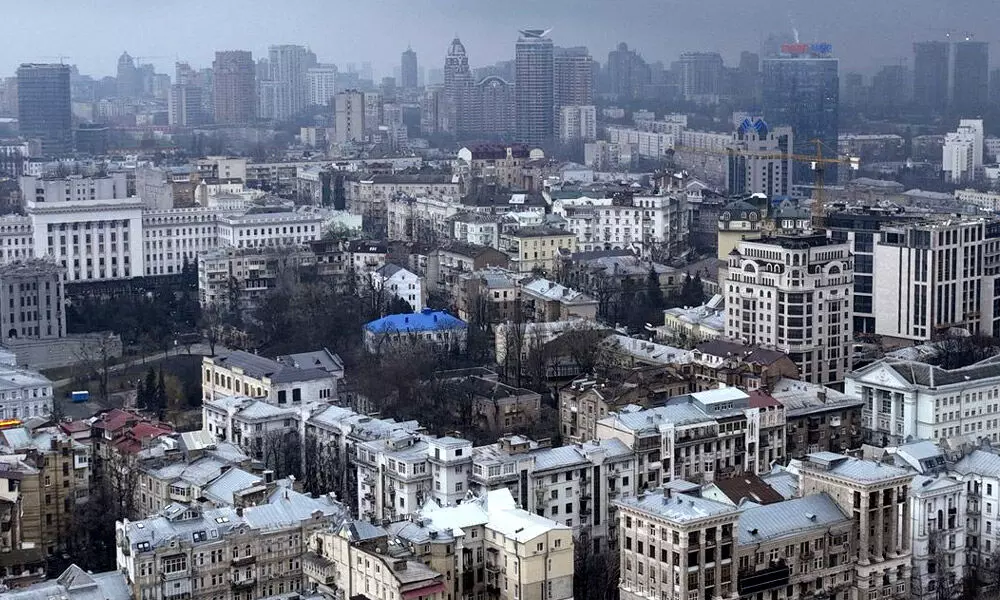Russian invasion of Ukraine roiling Indian markets
India may be far removed from the geographic location of the crisis, the tensions may still have the potential of a major impact on the Indian economy. In a globally connected world, geopolitical developments such as this always have the potential to impact countries not directly involved in the conflict.
image for illustrative purpose

India may be far removed from the geographic location of the crisis, the tensions may still have the potential of a major impact on the Indian economy. In a globally connected world, geopolitical developments such as this always have the potential to impact countries not directly involved in the conflict. Little wonder therefore that soon after Russia launched an armed forces attack on Ukraine, sending shockwaves across the world, the BSE Sensex has immediately fallen 1800 points. The geo-political event has been causing a rout across equity markets, as the world can ill-afford further disruption in trade and commodities when Covid has already weakened sovereign balance sheets. The Russia-Ukraine armed conflicts added a negative trigger to the existing overhang of the US Fed likely raising rates in March 2022. Indian markets have not been immune to the same and have witnessed a massive selloff. This is a time when investors will be tested for their patience and discipline. Markets are choppy and will probably remain this way for some time. However, market experts are of the view that investors should not press the panic button. In fact they have more reasons than one to remain long on India.
Mind you that India's corporate health is the strongest in a long time - deleveraging has been seen across sectors and cash reserves have surged. As a result corporate confidence is high. Promoters are optimistic about the business potential, which is reflected in the increasing promoter holding in Nifty-500 over time, increasing from 32 per cent to 45 per cent over the last decade. Interestingly, post-Covid, promoters have increased stake by nearly 3 per cent. Public capex is still strong and private capex cycle is making a comeback. Then there are other reasons as well. The China plus one strategy is helping drive demand in specific sectors. The PLI scheme is a big game changer that is encouraging and supporting domestic production. And last but not the least, the Green energy transition for India is opening up a whole new investment opportunity for the investors.
While capital markets may have reasons not to be panicky about the development at this point, the Russia-Ukraine crisis could prove to be a major headache for Indian households as well as the policymakers. Ukraine and Russia together account for 90 per cent of India's sunflower oil imports. Sunflower oil is one of the most popular edible oils consumed in India, alongside palm, soya and other alternatives. In fact, sunflower oil is the second most imported edible oil, next to only palm oil. Last year only, India imported 1.89 million tonne of sunflower oil – 70 per cent of this was from Ukraine alone. Russia accounted for 20 per cent and the balance 10 per cent was from Argentina. Amid the tensions with Russia, Ukraine has reportedly not sent a single shipment of sunflower oil in February. The usual shipment from Ukraine in the February-March period is between 1.5 to 2 million tonne of sunflower seeds and if the ongoing conflict continues for two or three weeks, it will put pressure on the Indian market.
Besides, India fulfils over half of its gas needs with imports of liquified natural gas (LNG) from Ukraine. A small part of India's LNG consumption is also met through imports from Russia. The other sector which needs attention in the wake of the current development is pharma, as India's main exports to Ukraine include pharmaceutical products. India is the third largest exporter of pharmaceutical products to Ukraine after Germany and France. The continuation of the Russia-Ukraine conflict for long may therefore cause some headache for India.

